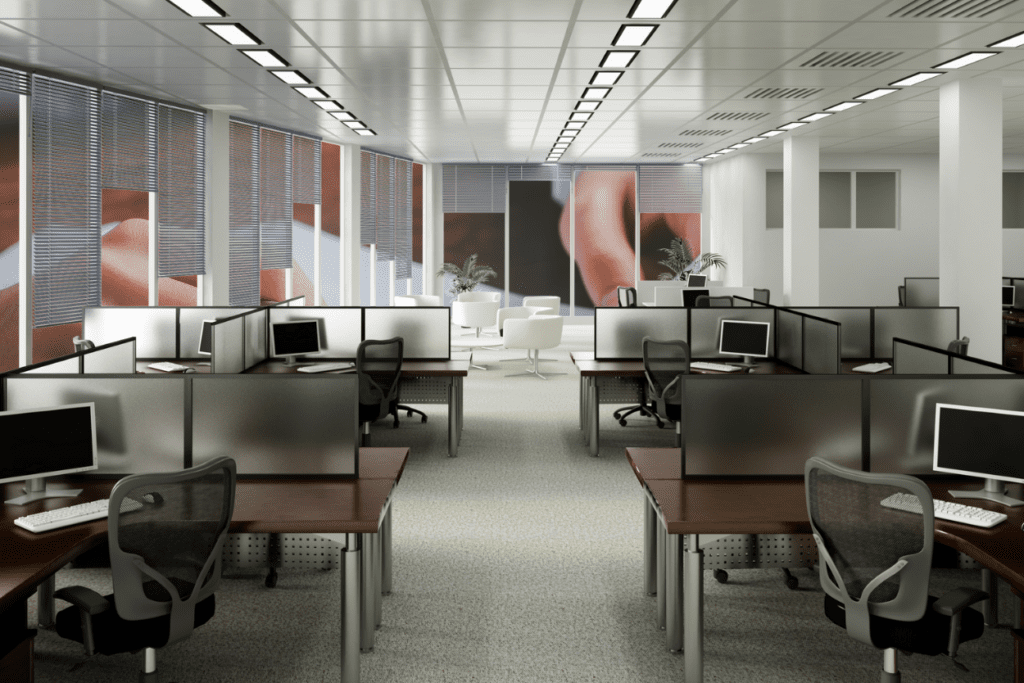Ergonomic office furniture is often associated with comfort and health benefits, but contemporary designs offer much more than meets the eye. The furniture market is projected to reach 1.5 billion users by 2029, highlighting its growing popularity. While many focus on the stylish appearance of contemporary office furniture, its ability to enhance posture, reduce strain, and improve overall productivity is equally important.
Here are seven lesser-known ergonomic benefits of contemporary office furniture, showing how these designs go beyond aesthetics to create a more comfortable workspace in New Haven, CT.
Key Takeaways
1. Enhanced Postural Support for Various Work Styles
2. Improved Circulation Through Active Sitting Designs
3. Reduction of Eye Strain with Adjustable Desks and Monitors
4. Minimized Fatigue with Height-Adjustable Workstations
5. Alleviation of Pressure Points with Memory Foam and Gel Padding
6. Support for Natural Movements with Flexible Workstations
7. Mental Focus Through Ergonomic Design
How to Choose Contemporary Office Furniture for Your Needs
Frequently Asked Questions (FAQs)
Upgrade Your Workspace with Stamford Office Furniture in New Haven, CT
Key Takeaways✔ Contemporary office furniture enhances ergonomic support, helping to improve posture and reduce physical strain. ✔ Active sitting designs in modern furniture promote better circulation and prevent stiffness during long work hours. ✔ Height-adjustable desks and flexible workstations minimize fatigue by encouraging movement throughout the day. ✔ Contemporary office furniture incorporates memory foam and gel padding to alleviate pressure points and enhance comfort. ✔ Ergonomic features, like adjustable monitor arms, reduce eye strain and neck discomfort in the workplace. ✔ Versatile, modular furniture adapts to changing work styles and encourages natural body movements. ✔ The aesthetic appeal of contemporary office furniture fosters a calming environment that boosts focus and productivity. ✔ Investing in contemporary office furniture contributes to long-term health benefits and improved work performance. |
Contemporary office furniture is designed to accommodate a range of work styles, making it easier for individuals to maintain proper posture throughout the day. Unlike traditional furniture, which often forces the body into rigid positions, modern ergonomic designs offer flexibility and adaptability.
One of the hidden benefits of contemporary office furniture is its role in promoting better circulation through active sitting. Active sitting encourages small, frequent movements that help stimulate blood flow and prevent stiffness.
Another often overlooked ergonomic benefit of contemporary office furniture is its ability to reduce eye strain through adjustability. By allowing users to position monitors and workstations at ideal heights and angles, contemporary designs help alleviate neck and eye strain.
Height-adjustable workstations are a key feature of contemporary office furniture, allowing users to alternate between sitting and standing. This promotes better energy levels and helps reduce fatigue from prolonged static postures.
Modern ergonomic furniture includes advanced cushioning materials such as memory foam and gel padding, which help alleviate pressure points during long work sessions. This results in a more comfortable and pain-free sitting experience.
Contemporary office furniture promotes natural body movements through its flexible designs, supporting a more active and dynamic work environment. This helps prevent the stiffness and discomfort that come from static postures.
Ergonomic design in contemporary office furniture doesn’t just affect physical comfort—it also plays a crucial role in improving mental focus. A more comfortable workspace leads to reduced distractions and increased productivity.
Selecting the right contemporary office furniture can significantly impact both comfort and productivity in the workplace. It’s essential to choose pieces that align with your ergonomic requirements, aesthetic preferences, and functional needs. Here are six key factors to consider when choosing contemporary office furniture for your space.
The global market for ergonomic chairs is projected to grow at a 7% annual rate from 2023 to 2030. As such, when selecting contemporary office furniture, prioritize ergonomic features that support your body during long hours of work. Look for chairs with adjustable height, lumbar support, and dynamic seating options. Desks that allow for sitting and standing transitions will also enhance comfort and productivity.
Contemporary office furniture should fit well within your workspace, maximizing the available area without cluttering it. Opt for furniture that offers streamlined designs and built-in storage options to keep your office organized. Space-saving designs, like compact desks or mobile workstations, are ideal for smaller areas.
Durability is a key factor in selecting office furniture, especially for high-traffic environments. Look for materials like metal frames, high-quality plastics, or sturdy wood that can withstand daily use. Contemporary office furniture should be built to last while maintaining its stylish appearance.
The aesthetic appeal of contemporary office furniture can influence the atmosphere and mood of your workspace. Choose designs that complement your office’s color scheme and overall vibe, whether it’s minimalist, industrial, or modern. The right aesthetic will not only look great but also contribute to a calming and productive environment.
Versatile furniture that adapts to different needs is a key element of contemporary office designs. Look for desks with adjustable heights, modular seating, or multi-functional pieces that can be rearranged as needed. Versatile furniture allows for flexibility and future-proofing as your needs change.
Comfort is paramount when choosing contemporary office furniture, so it’s essential to try out items before purchasing. Ensure chairs provide adequate support for your back and hips, and that desks are the right height for your tasks. A comfortable setup leads to better posture, reduced fatigue, and improved work performance.

Contemporary office furniture emphasizes sleek, minimalist designs and ergonomic functionality, while traditional office furniture tends to be bulkier and more decorative. Contemporary pieces are often more lightweight and adaptable, featuring adjustable elements like height and reclining options. In contrast, traditional furniture may prioritize aesthetics over ergonomic comfort, which can result in less flexibility for different work needs.
Yes, many contemporary office furniture brands offer customizable options to suit individual preferences and workspace requirements. You can often select materials, colors, and configurations that match your office’s layout and design. Some pieces, like desks and chairs, may also come with modular or adjustable features, allowing you to create a tailored ergonomic experience.
While contemporary office furniture can sometimes be more expensive due to its ergonomic design and high-quality materials, there are many affordable options available. The cost typically depends on the brand, features, and materials used. Investing in ergonomic furniture may result in long-term savings by improving employee comfort and reducing the need for replacements or healthcare costs related to poor ergonomics.
Maintaining contemporary office furniture is generally easy, as most pieces are made with materials designed for durability and low maintenance. For fabric-covered chairs, regular vacuuming or spot cleaning is recommended, while hard surfaces like desks can be wiped down with a damp cloth. For metal or plastic components, a mild cleaning solution is usually sufficient to keep the furniture looking new.
Yes, contemporary office furniture often includes flexible, modular pieces designed to encourage collaboration. Items like mobile workstations, shared desks, and lounge areas can be easily rearranged to facilitate teamwork. This adaptability fosters a more dynamic and interactive environment, enhancing both creativity and productivity in collaborative settings.

Stamford Office Furniture in New Haven, CT, offers a wide selection of contemporary office furniture designed to enhance both comfort and productivity. Whether you’re outfitting a home office or upgrading your corporate workspace, our stylish and ergonomic pieces will transform your environment into a more efficient and comfortable space.
Contact us today to explore how our modern solutions can meet your unique needs and elevate your workspace.